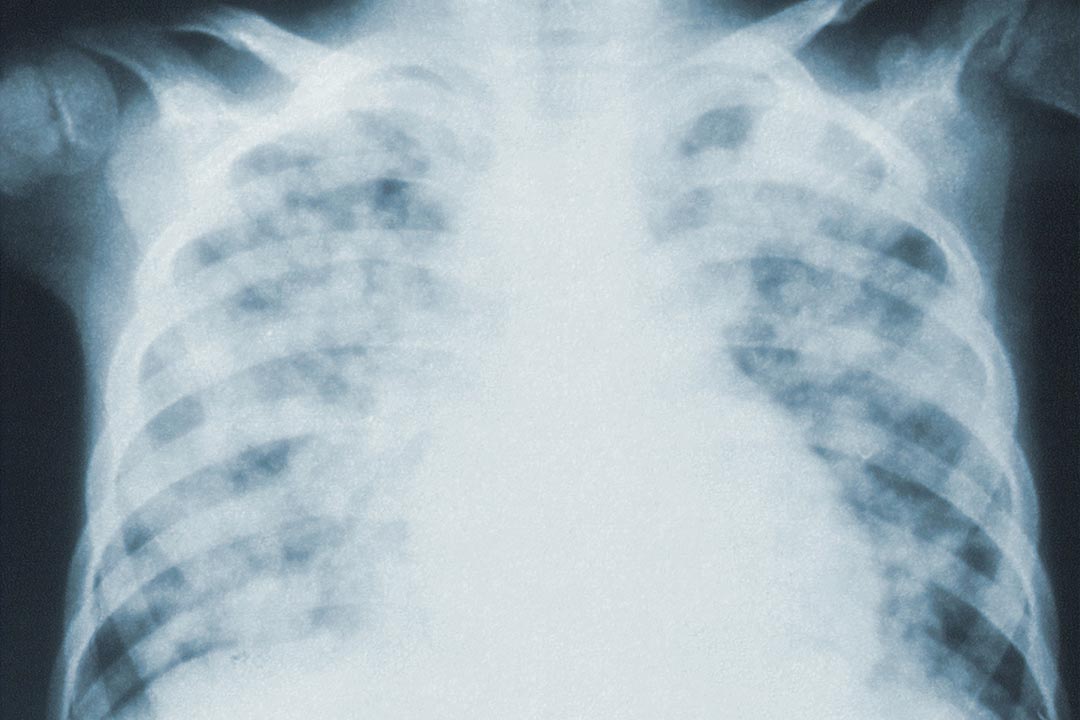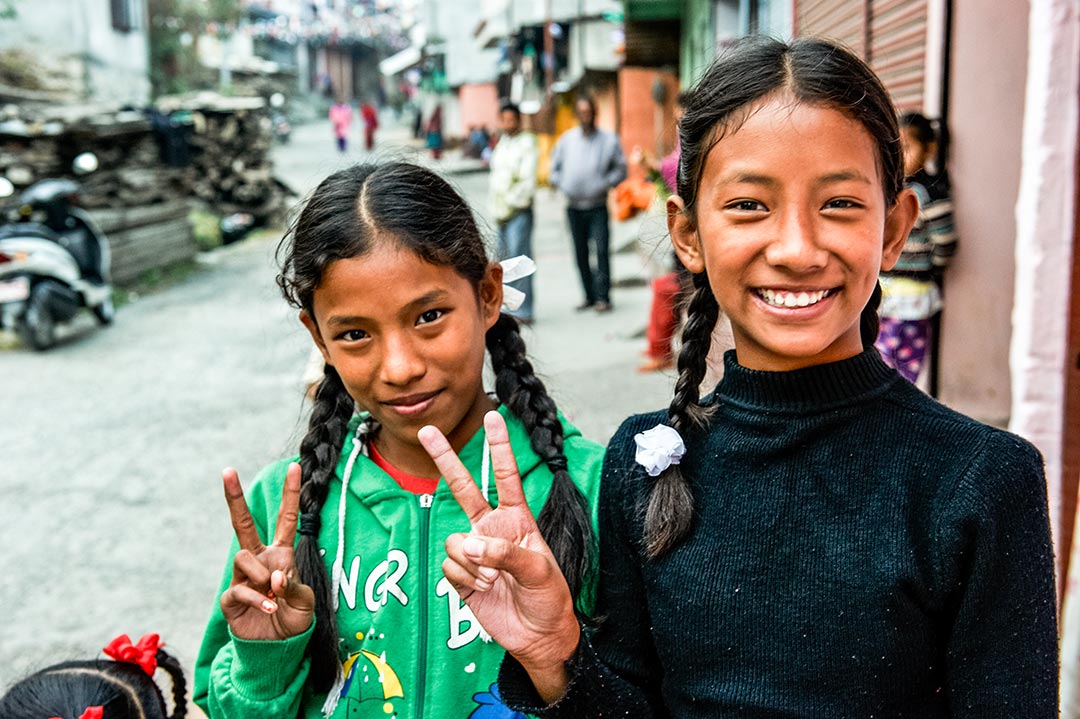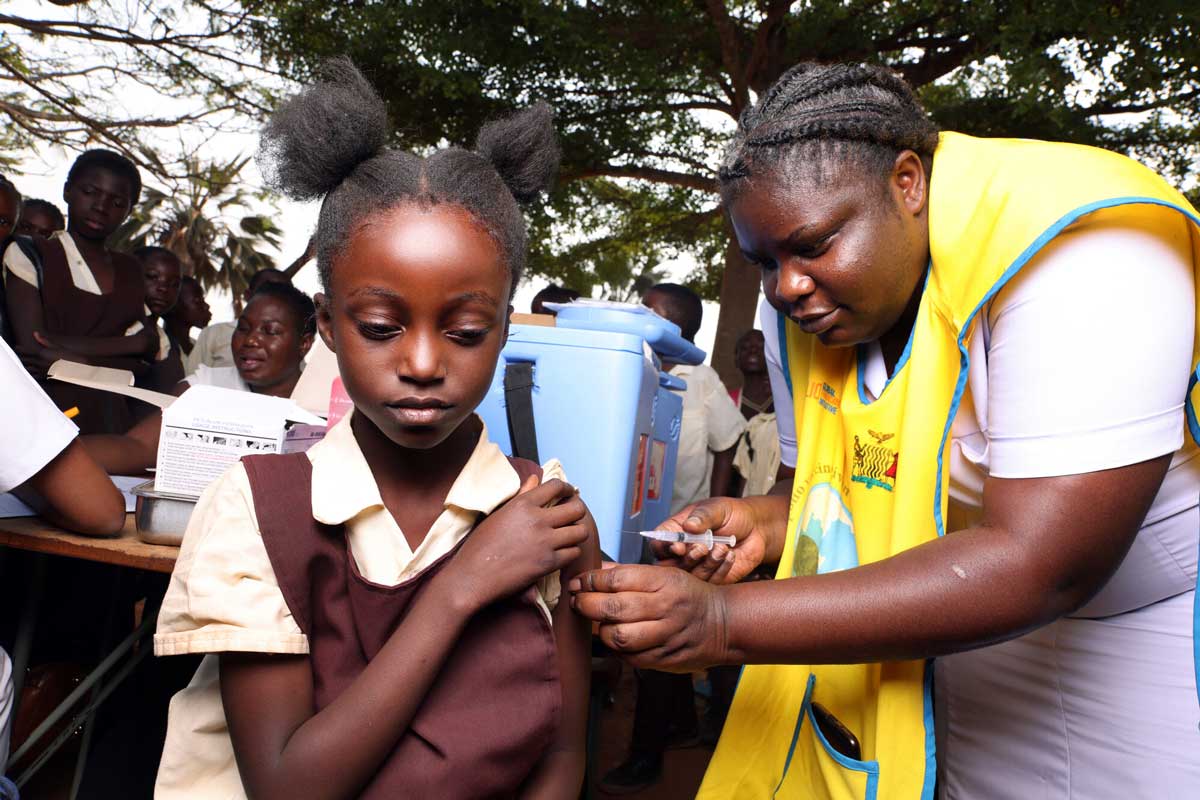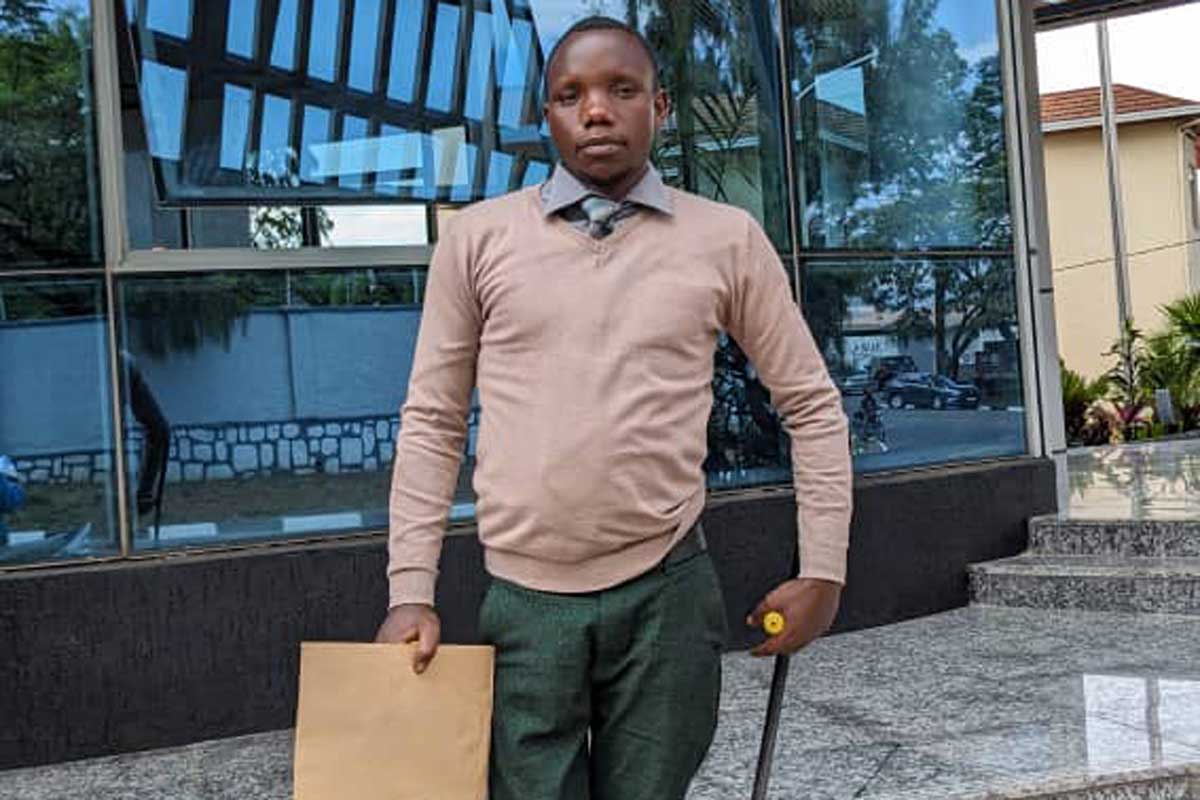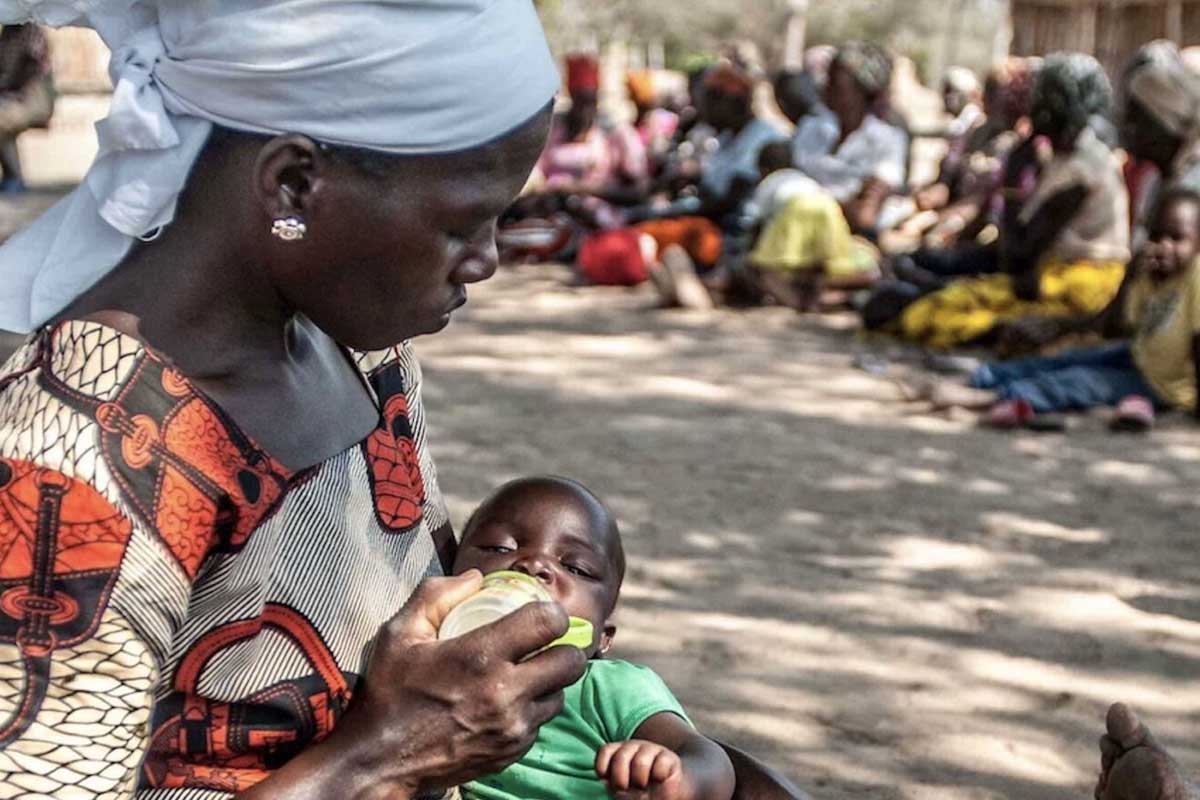Five charts on the state of routine immunisation in lower-income countries
This week Gavi published an analysis of the state of routine immunisation in lower-income countries across the world. Here are five charts highlighting the main findings.
- 29 July 2022
- 3 min read
- by Jessica Gergen , James Fulker
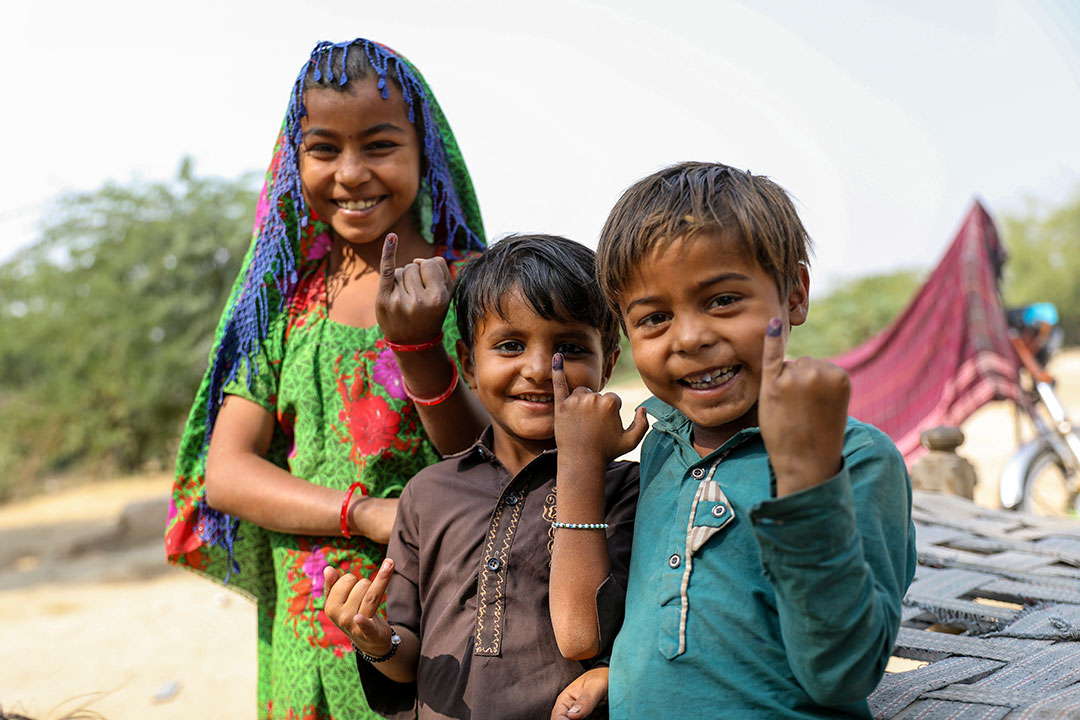
2020, the first year of the pandemic, saw the biggest drop in routine immunisation coverage in 30 years as lockdowns, staff shortages and economic slowdown hit health systems hard.
This week Gavi released its analysis of what happened in 2021, drawing from the global WHO/UNICEF Estimates of National Immunisation Coverage and focusing on the state of immunisation in the 57 lower-income countries supported by Gavi.
Here’s what we found.
1. The pandemic has had a massive impact on routine immunisation in lower-income countries
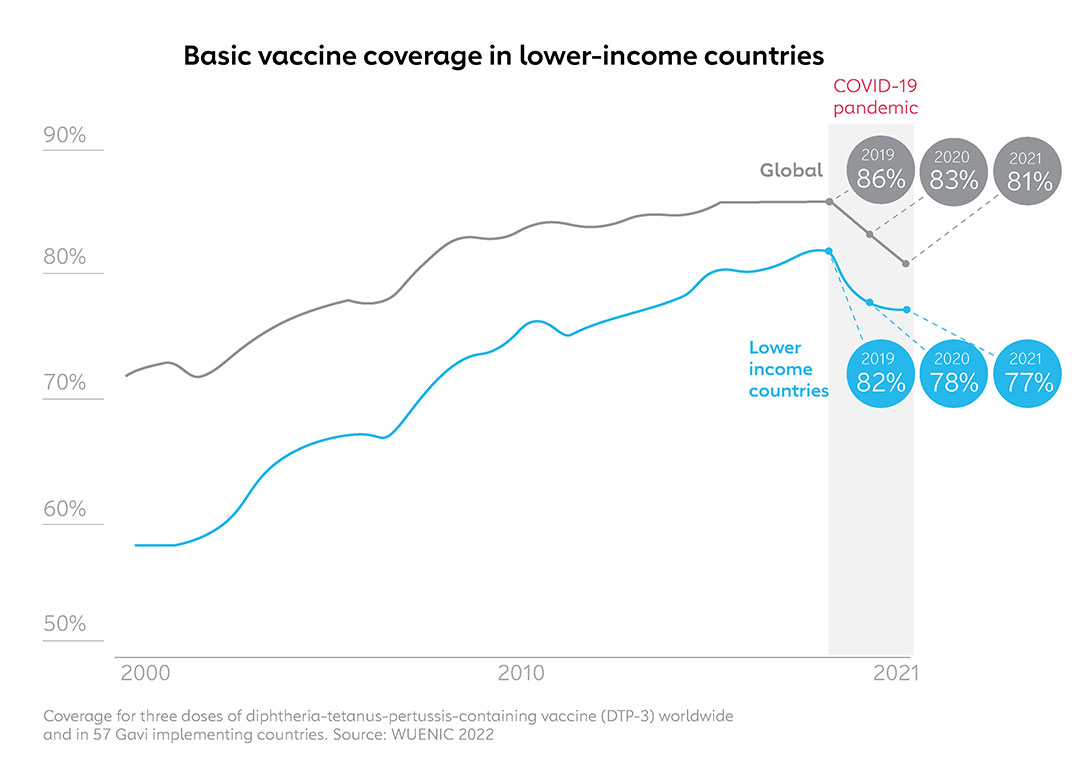
Prior to the pandemic, lower-income countries saw two decades of skyrocketing vaccine coverage. With support from the Vaccine Alliance, they drove basic vaccine coverage, measured as three doses of diphtheria-pertussis-tetanus vaccine (DTP3), up from an average of 59% in 2000 to 82% in 2019, closing the gap with the rest of the world and helping to halve child mortality. The pandemic has reversed these gains, with 2021 seeing a one percentage point drop after a four percentage point drop in 2020.
Whereas 2020 saw a direct impact from the pandemic, 2021 seems to have more varied underlying drivers across countries and regions, including health worker strikes, political unrest and conflict, continued measures to control the pandemic and COVID-19 vaccine scale-up.
2. This has led to an unprecedented rise in the number of zero-dose children

This drop in coverage has also led to an unprecedented rise in the number of zero-dose children – children who receive no DTP vaccines whatsoever. After dropping to a historic low of 9.3 million in lower-income countries in 2019, the number of zero-dose children has risen to 12.5 million during the pandemic. Without urgent remedial measures, the impact of this drop in routine vaccine coverage could be felt for a generation. Millions of children could grow up unprotected against deadly diseases that vaccines have largely been keeping at bay.
3. But there are signs of recovery, with a mixed picture around the world
This bleak picture was not uniform to every country supported by Gavi. Despite continuing declines in several countries in 2021, over half of the 57 countries managed to stabilise or even increase coverage in 2021. Amidst the gloom there are signs of recovery and resilience.
4. Chad and Pakistan hold lessons to learn
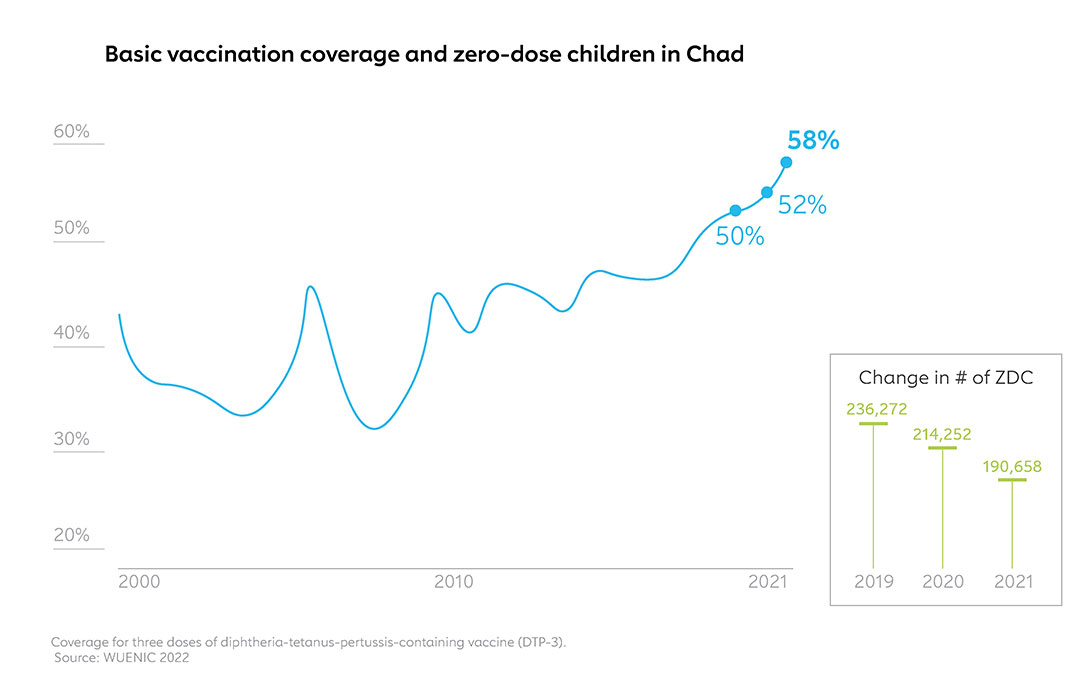

Chad and Pakistan in particular saw strong performances in 2021. Chad increased its vaccine coverage throughout the pandemic, with the percentage of children immunised with basic vaccines rising from 50% in 2019 to 58% in 2021.
Pakistan’s immunisation programme suffered heavily through the lockdowns of 2020, but successfully returned both vaccine coverage and the number of zero-dose children close to pre-pandemic levels in 2021.
5. COVID-19 vaccinations continue to increase in lower-income countries
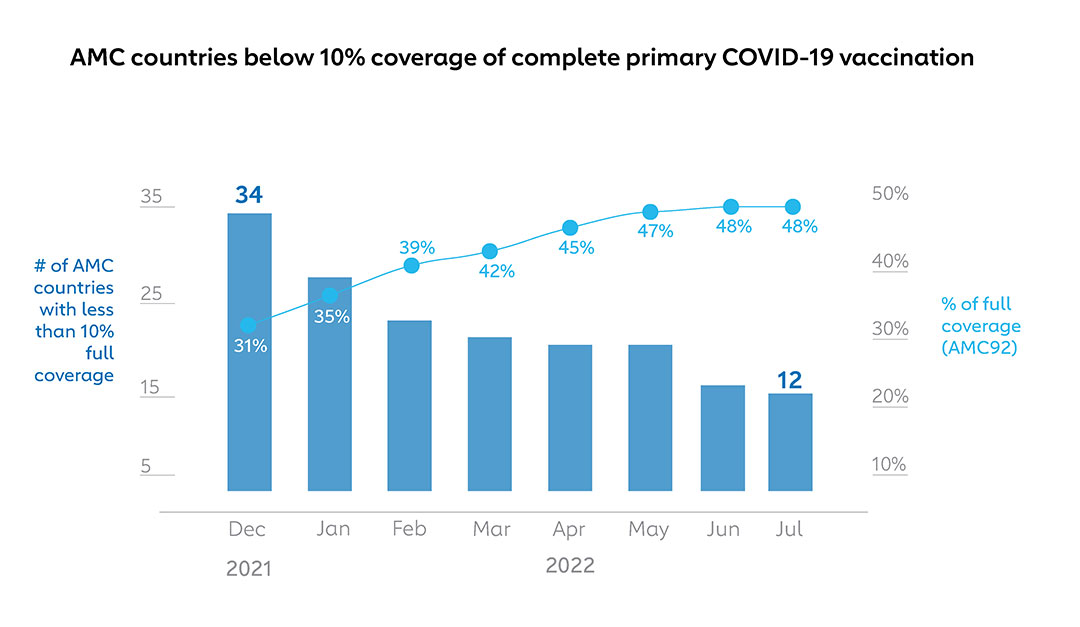
Meanwhile, we cannot forget that throughout 2021 vaccine programmes were busy rolling out COVID-19 vaccines. In fact, taking into account the two billion COVID-19 vaccines rolled out by the 57 Gavi-supported countries, 2021 saw more vaccines administered by lower-income countries than any other year in history.
Through the hard work and determination of hundreds of thousands of health officials and vaccinators across the globe, many immunisation programmes were able to successfully deliver both COVID-19 and routine vaccines in 2021. As this graph shows, COVID-19 vaccine coverage continued to rise in 2022, with coverage in the 92 lower-income countries eligible for the COVAX Advance Market Commitment (AMC) now standing at 48%.

